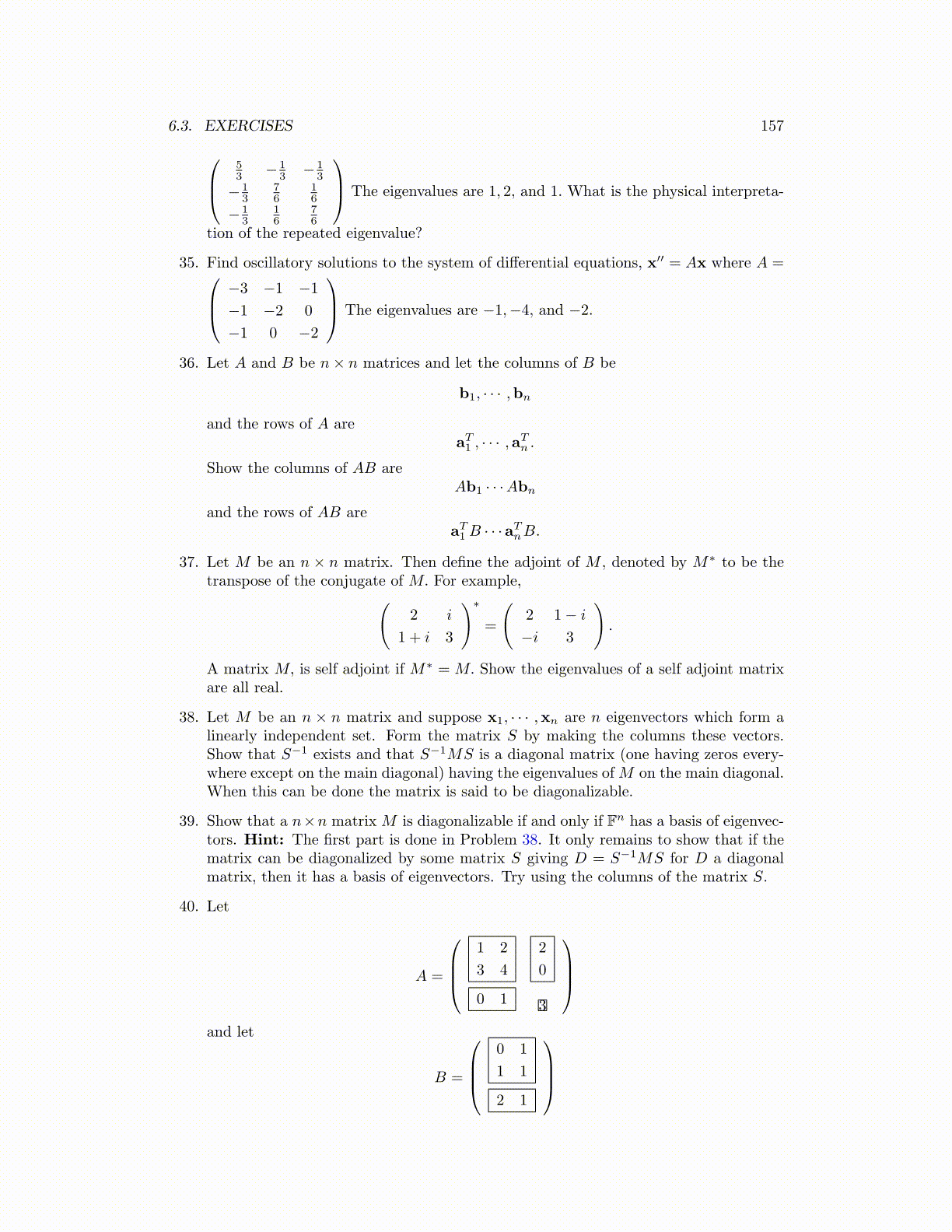
6.3. EXERCISES 157
53 − 1
3 − 13
− 13
76
16
− 13
16
76
The eigenvalues are 1, 2, and 1. What is the physical interpreta-
tion of the repeated eigenvalue?
35. Find oscillatory solutions to the system of differential equations, x′′ = Ax where A = −3 −1 −1
−1 −2 0
−1 0 −2
The eigenvalues are −1,−4, and −2.
36. Let A and B be n× n matrices and let the columns of B be
b1, · · · ,bn
and the rows of A areaT1 , · · · ,aTn .
Show the columns of AB areAb1 · · ·Abn
and the rows of AB areaT1 B · · ·aTnB.
37. Let M be an n × n matrix. Then define the adjoint of M , denoted by M∗ to be thetranspose of the conjugate of M. For example,(
2 i
1 + i 3
)∗
=
(2 1− i
−i 3
).
A matrix M, is self adjoint if M∗ = M. Show the eigenvalues of a self adjoint matrixare all real.
38. Let M be an n × n matrix and suppose x1, · · · ,xn are n eigenvectors which form alinearly independent set. Form the matrix S by making the columns these vectors.Show that S−1 exists and that S−1MS is a diagonal matrix (one having zeros every-where except on the main diagonal) having the eigenvalues ofM on the main diagonal.When this can be done the matrix is said to be diagonalizable.
39. Show that a n×n matrix M is diagonalizable if and only if Fn has a basis of eigenvec-tors. Hint: The first part is done in Problem 38. It only remains to show that if thematrix can be diagonalized by some matrix S giving D = S−1MS for D a diagonalmatrix, then it has a basis of eigenvectors. Try using the columns of the matrix S.
40. Let
A =
1 2
3 4
2
0
0 1 3
and let
B =
0 1
1 1
2 1